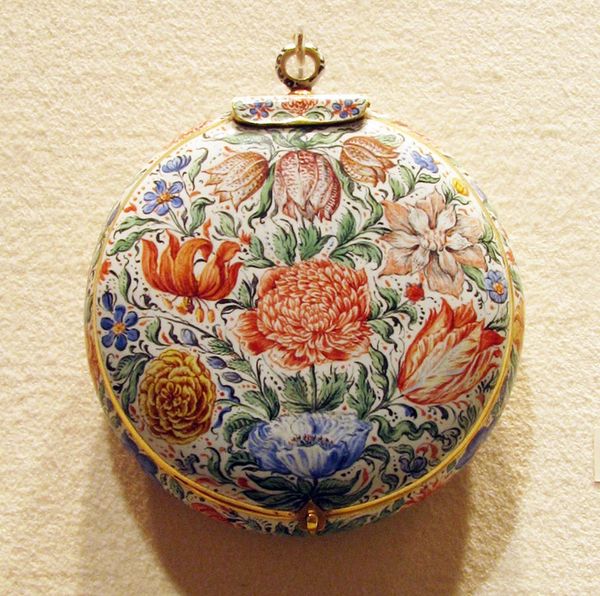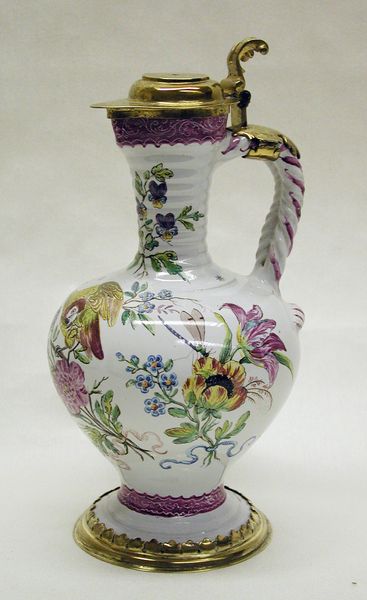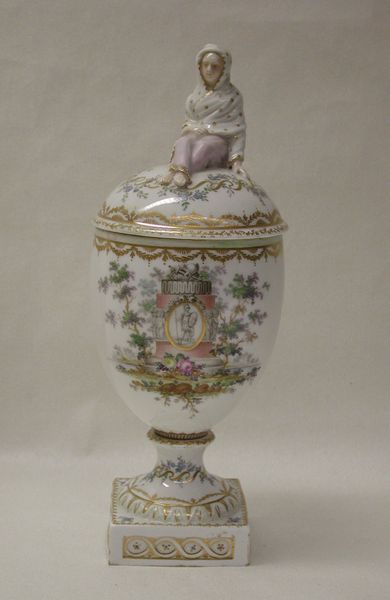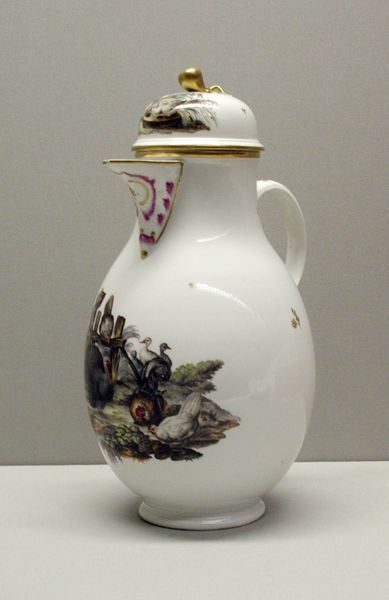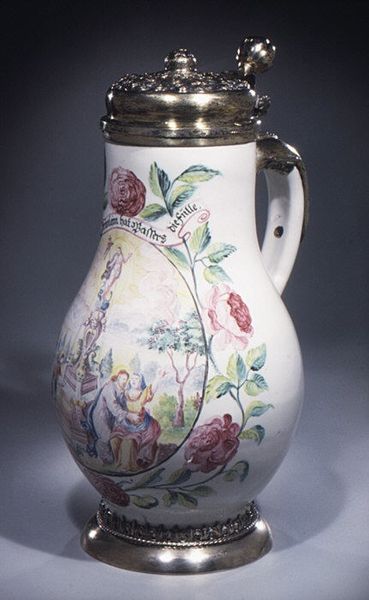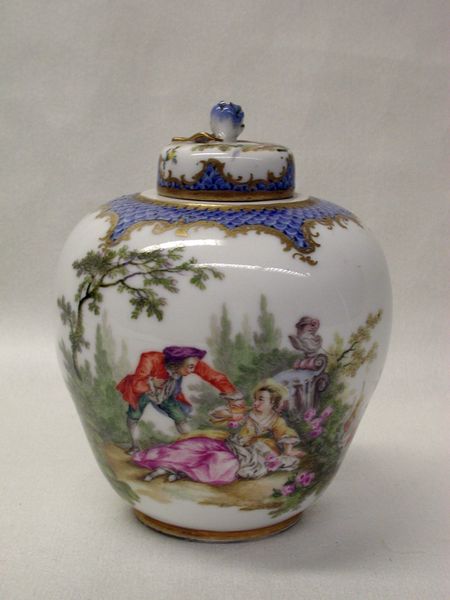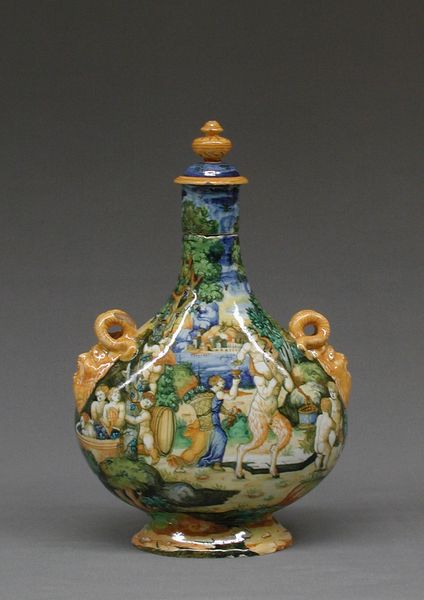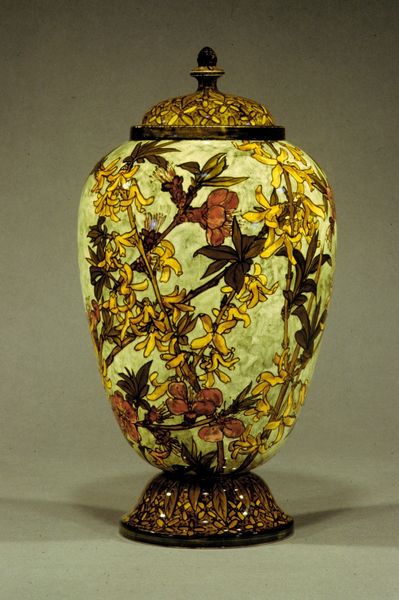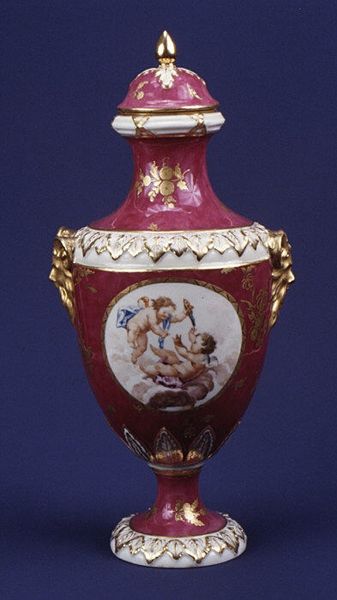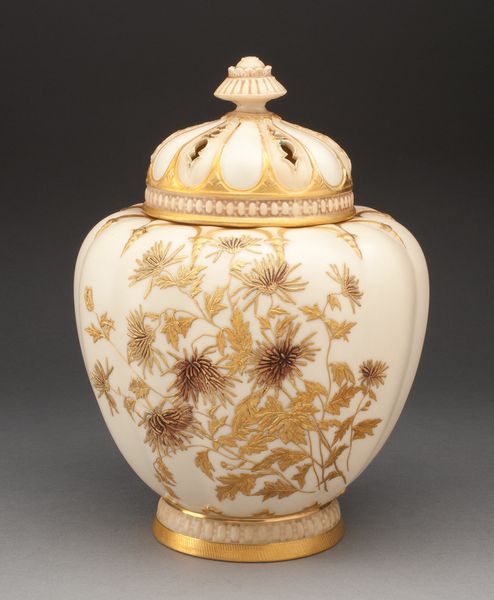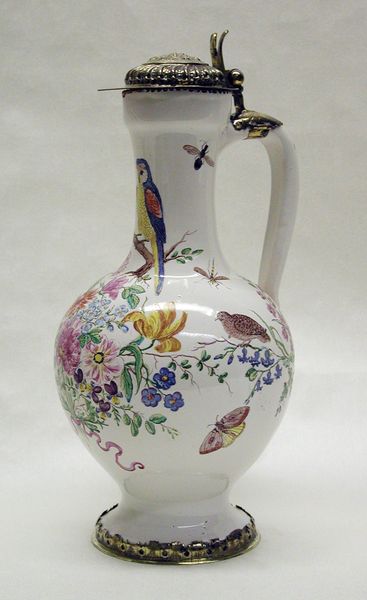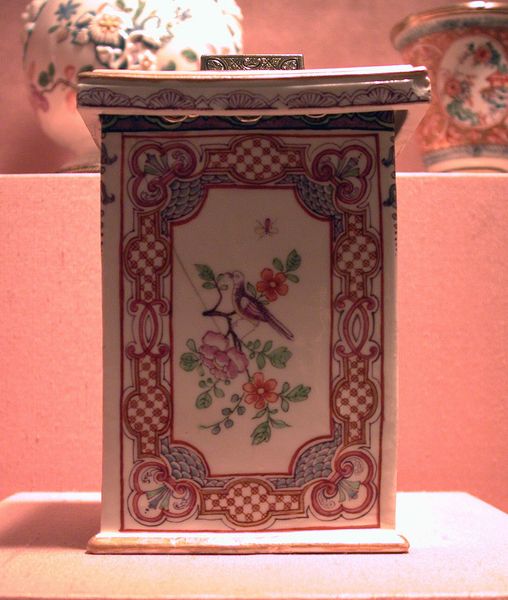
painting, metal, sculpture
#
ornate
#
decorative element
#
painting
#
metal
#
flower
#
sculpture
#
decorative-art
#
decorative art
#
miniature
#
rococo
Dimensions: Diameter: 1 5/8 in. (4.1 cm)
Copyright: Public Domain
Editor: Here we have Julien Le Roy's "Repeater Watch," crafted between 1750 and 1760. It seems to be made of some kind of painted metal, very ornate and delicate. I am fascinated by how functional objects were elevated to this level of artistry back then. What's your take on this piece? Curator: The sheer opulence is striking, isn't it? A watch transformed into a miniature work of art reflects the social climate of the French court. Consider who possessed such an object: likely an aristocrat, flaunting their wealth and taste in a period of growing social inequality. The watch isn't merely for telling time; it’s a symbol. What do you make of the floral motifs? Editor: They give it a frivolous, decorative quality, which, now that you mention the social context, feels a bit… indulgent. Almost a Marie Antoinette-esque "let them eat cake" vibe. Was this typical of the time? Curator: Exactly! The Rococo style, exemplified here, was heavily favored by the elite. These decorative arts were powerful displays of status. These weren't just pretty objects; they actively communicated the owner's position in the social hierarchy. Did items like these legitimize the existing structures, or make them seem more fragile and vulnerable to scrutiny? Editor: It’s interesting to consider it less as simple artistry and more as a tool, used to support or challenge the politics of the era. I'll definitely view decorative art with a different perspective now. Curator: Precisely. By examining art through a socio-political lens, we reveal how intertwined art and power truly are.
Comments
No comments
Be the first to comment and join the conversation on the ultimate creative platform.

